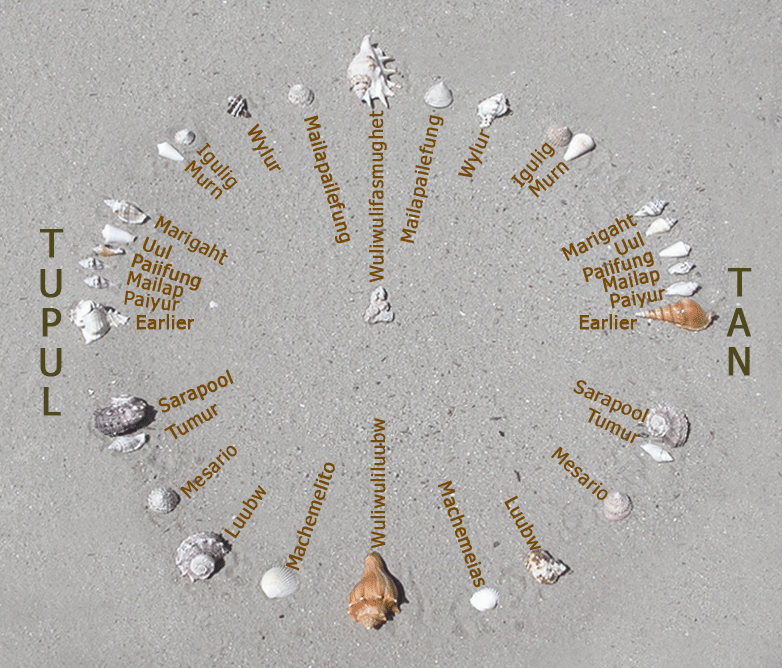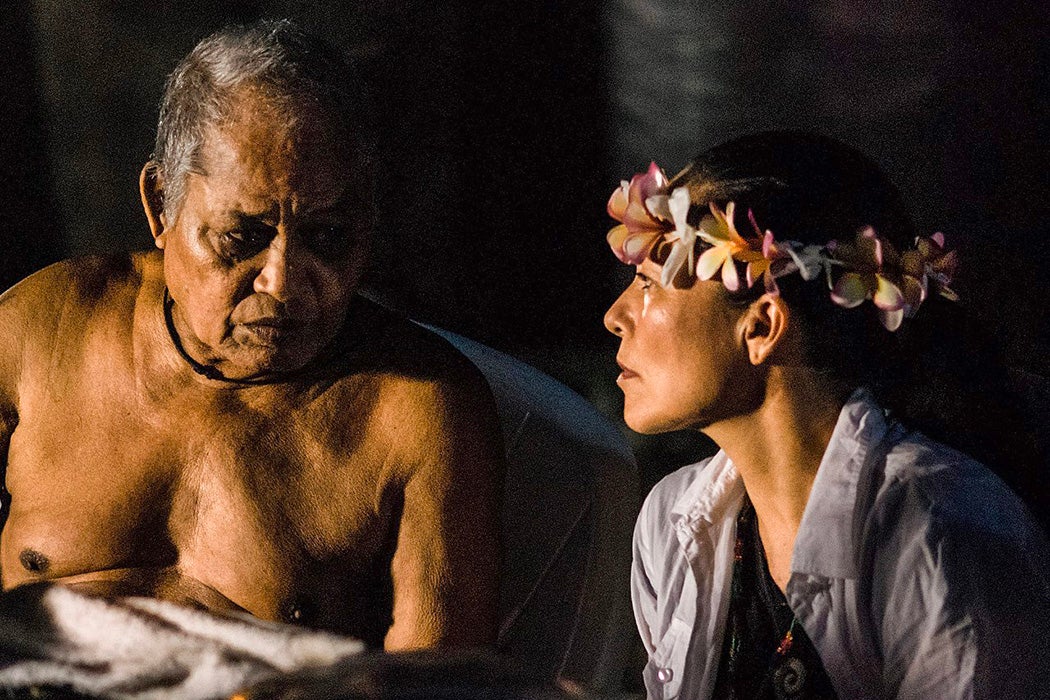It’s 1976, and a Polynesian voyaging canoe christened Hōkūleʻa is slicing through the ocean somewhere between Hawaiʻi and Tahiti. A Micronesian man named Pius “Mau” Piailug—usually referred to as Mau—sits at the back of the boat, studying the rhythm of the waves and giving commands. This journey of 6,000 nautical miles will take thirty-four days to complete, but Mau will never rest for more than a few hours at a time. Of the fifteen-strong crew (made up of both Polynesian and Micronesian sailors), he’s the only one who possesses the ancient knowledge of wayfinding—using his memory, the stars, and the swell to navigate the open ocean rather than modern instruments.
Mau was born in 1932 on the coral speck that is Satawal, a low-lying island in the Western Carolines. Because the islands in the part of the Caroline archipelago were too small for colonial conquest and not strategically convenient for the nuclear testing that would soon disrupt Indigenous knowledge on the Marshall Islands, their inhabitants were able to preserve a culture of navigation well into the twentieth century.
Mau learned sophisticated techniques including bugoloa (how to connect the directions of wave patterns to determine the best course) from his grandfather, Raangipi, during an apprenticeship in the Weriyeng wayfinding system that lasted decades. As a small child, he studied chunks of coral that represented key navigational stars before moving on to memorize an age-old map of Micronesia that included the names and positions of stars, habits of birds and fish, and routes through reefs and atolls.
With memory playing such a crucial role, retaining focus for the entire voyage was a vast responsibility. A moment of vagueness and the vessel could drift off course to shatter on one of the spiky coral reefs for which the Pacific is known. However, the responsibility of preserving the ancient knowledge of wayfaring seems to have weighed even more heavily. By 1970, Mau was one of just six pwo (master) navigators left, all living on Satawal or the neighboring island of Puluwat. Several were already too elderly to go to sea.

Hawaiʻi’s Polynesian Voyaging Society built the modernized Hōkūleʻa using historic records as part of a bid to reintroduce Indigenous practices that had become extinct during colonial times. By agreeing to lead the Polynesian voyage, Mau broke with a tradition that saw the wayfaring knowledge strictly held within the familial lineage of the navigator. Furthermore, he took the momentous decision to mentor non-Micronesian students including Hawaiian sailor Nainoa Thompson (now CEO of the Polynesian Voyaging Society), who guided the Hōkūleʻa on the return voyage from Tahiti to Hawaiʻi.
Some Micronesians, including Mau’s half-brother and master navigator Ali Haleyalur, accuse the Polynesian Voyaging Society of cultural appropriation, arguing that Mau didn’t share the Weriyeng system with Thompson, but passed it on to his own son, Sesario, who also became a master navigator. Critics also object to the society appointing its own pwo navigators, claiming that they don’t have the knowledge or authority to conduct this sacred Micronesian initiation ritual.
Weekly Newsletter
What would Mau think of this? We can’t know, as he died in 2010 at age seventy-eight, from complications relating to diabetes. However, he didn’t leave his life before planting two significant seeds. The first was holding a pwo ceremony—the first on Satawal in fifty-six years—during which he bestowed the title on numerous students, including Thompson and some of his sons. The second was putting in motion the foundation of the Mau Piailug Society, an NGO that shares videos about wayfinding as well as other Micronesian traditions.
More than fifty years on, Mau’s influence still ripples through Polynesia, Micronesia, and Melanesia. Sesario continues to coach students from all over the world from his home in Palau. On June 15, 2023, Hōkūleʻa and her sister canoe, Hikianalia, set off for a 43,000-nautical-mile circumnavigation of the Pacific Ocean, a journey that will take four years, span more than 100 Indigenous territories, and involve 400 crew members (taking it in turns to man the canoes). Mau’s extraordinary cross-cultural generosity may have rocked the boat, but it has inspired a revival in traditional wayfinding across the Pacific.
Support JSTOR Daily! Join our new membership program on Patreon today.







